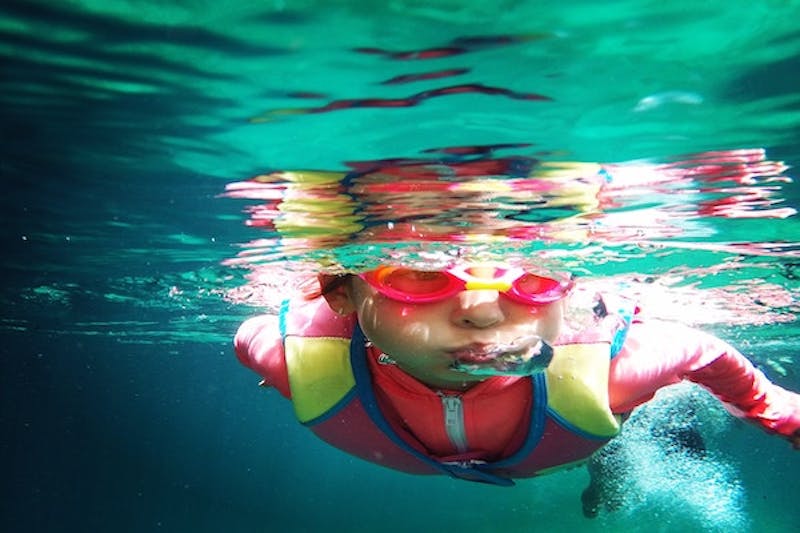
Yesterday was the first day of spring, and summer will be here soon. We want to give parents a heads up for what’s around the corner. With swimming season approaching, we need to inform you of swimmer’s ear and how to prevent it.
What is swimmer’s ear:
Many people have had swimmer’s ear but did not truly understand what caused it. Swimmer’s ear is an infection of the ear canal. The ear canal is a passage way that carries sound from the outer ear to the ear drum. Swimmer’s ear can be caused by a variety of bacteria or fungi.
The medical term for swimmer’s ear is Otitis Externa. Do not be alarmed if you see this term on your medical print outs. This is extremely common for kids that spend plenty of time in water such as pools, lakes, or oceans.
While there is too much moisture in the ear canal, major irritation can break down the skin in the ea canal. This gives bacteria and fungi the opportunity to penetrate the skin. Swimmer’s ear is most prominent in summer months as it is a popular time for water sports and swimming.
How do you get swimmer’s ear:
However, you do not have to swim to get swimmer’s ear. An infection can be caused by just about anything breaking the skin of the ear canal. Scratching inside your ear can break the skin. Dry skin caused by eczema or cleaning your ear with cotton swabs can also lead to vulnerability.
It is more common in children and infants as they put foreign objects such as crayons, hair clips, or bobby pins in their ear which scratches the delicate ear canal skin. If you already have a middle ear infection, pus collected in the middle ear may drain into the ear canal. The pus travel through a hole in the eardrum thus causing the infection.
Signs you need to see a doctor:
Ear pain is the first sign you need to seek medical attention. Swimmer’s ear can become progressively worse once the outer ear is pulled or pressed on. It may especially hurt when chewing.
Commonly the ear canal itches before the pain begins. The swelling in the ear may make children complain of feeling something inside of their ear. The outer ear may look red or swollen.
Lymph nodes around the ear may get enlarged and tender. The most obvious sign of infection is discharge coming from the ear canal. At first, it is usually clear but then turns cloudy, yellowish, and pus-like. Do not put off seeking immediate medical attention when an ear has discharge.
This is a sure sign something is very wrong. Hearing may be affected as liquid and pus in the ear canal causes a blockage for the passage of sound into your ear. In most cases, fever is not typical.
Prevention:
Goods new is, swimmer’s ear can be prevented. There are over-the-counter drops of a dilute solution of acetic acid. Using these drops after being in water or around splashing water can help prevent swimmer’s ear.
Kids at summer camps have these drops provided to them following swimming or water activities. They are especially beneficial to children that have gotten swimmer’s ear multiple times. It is very serious that people with tubes in their ears or a hole in their eardrum do not use ear drops.
Do not let children put ear drops into their own ears. This can cause major injury. Remember to never clean your child’s ears out. Especially avoid using foreign objects for ear cleaning other than anything recommended by our physicians.
Treatment:
If you think you or your child has swimmer’s ear, make an appointment with Orlando ENT Hearing Center physicians. Treatment varies depending on severity. Ear drops may be prescribed that will alleviate pain, swelling, and fight infection.
Most ear drops for swimmer’s ear contain steroids for the swelling and antibiotics to fight the bacteria. Ear drops are usually used one to three times a day for around seven to ten days. Instructions vary based on a case by case basis.
For more severe cases, an oral antibiotic may be prescribed as well. The doctor may need to run tests in order to distinguish between fungi or bacteria presence. Pain medication is prescribed if completely necessary, but over-the-counter pain relievers are most likely sufficient. Treatment is usually no longer than two weeks start to finish.
We hope this has been a helpful blog for you and your children’s approaching summer activities. Take preventative measures and speak to our doctors about using ear drops at summer camp or on your cruise. We hope you have a great week and enjoy the beginning of spring!
Staff Writer

